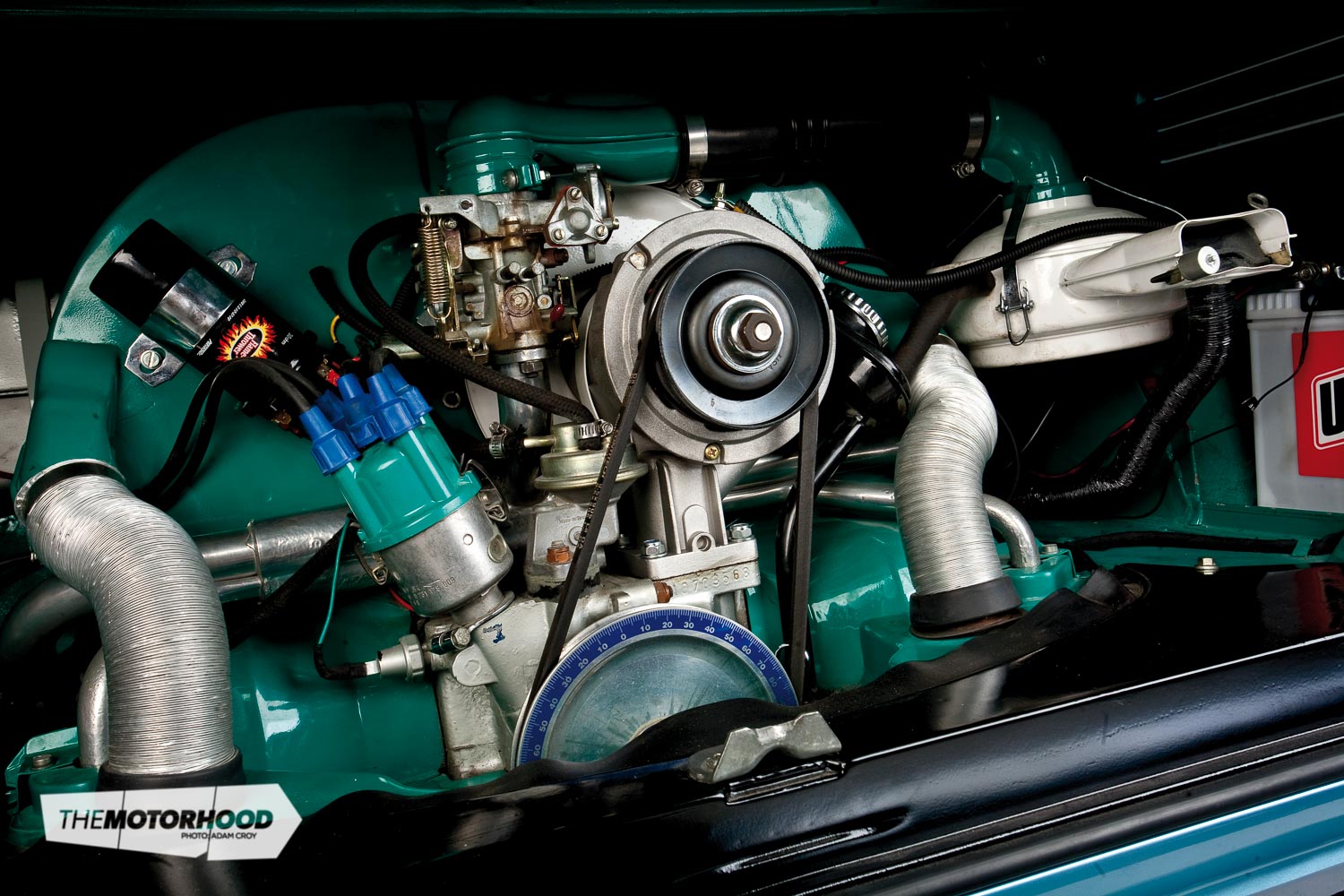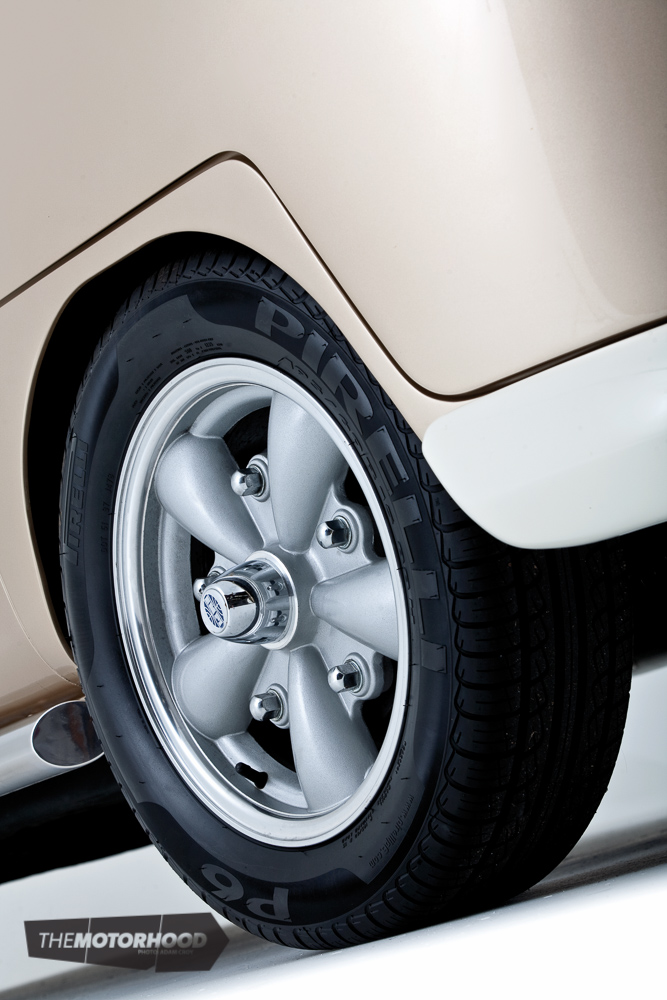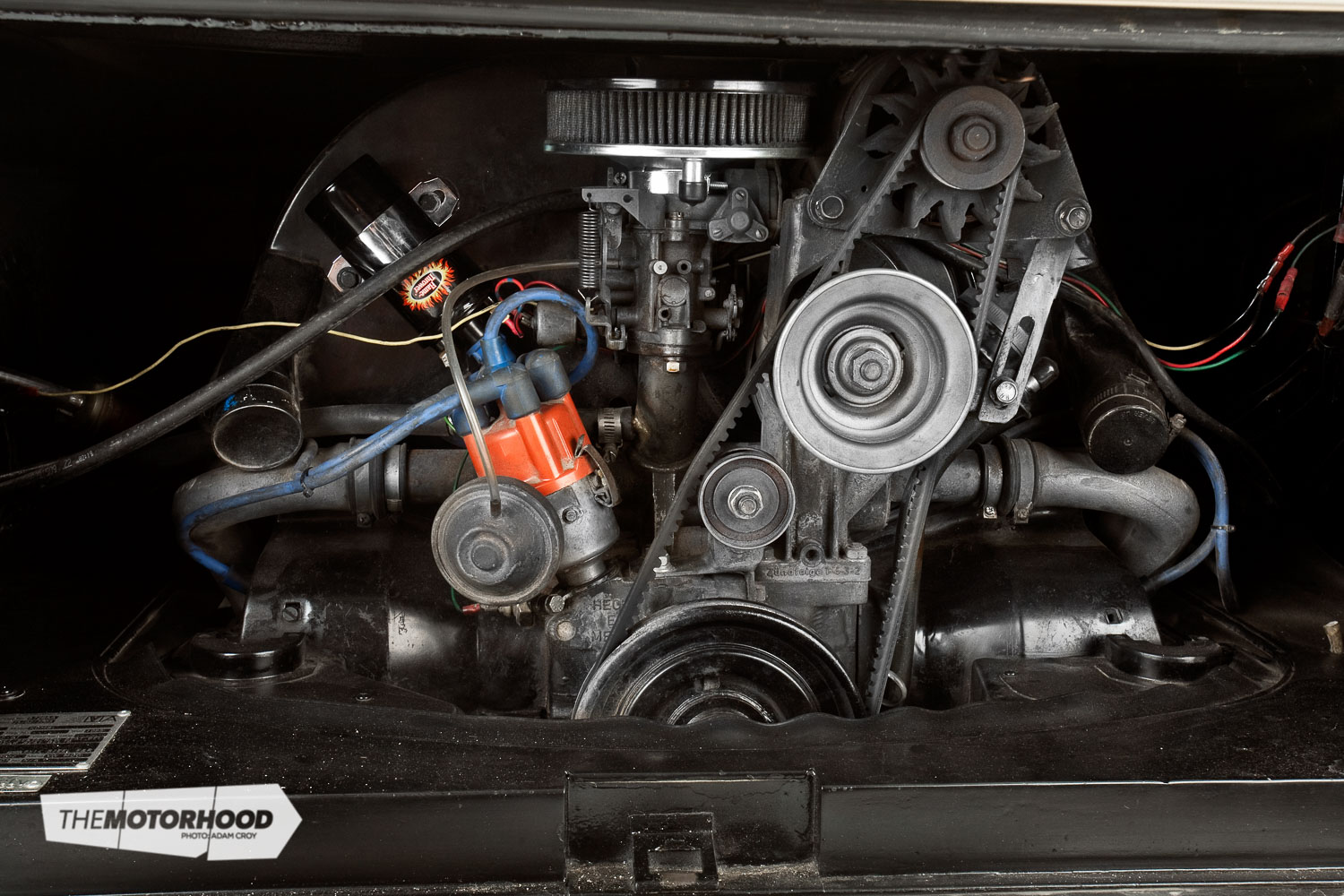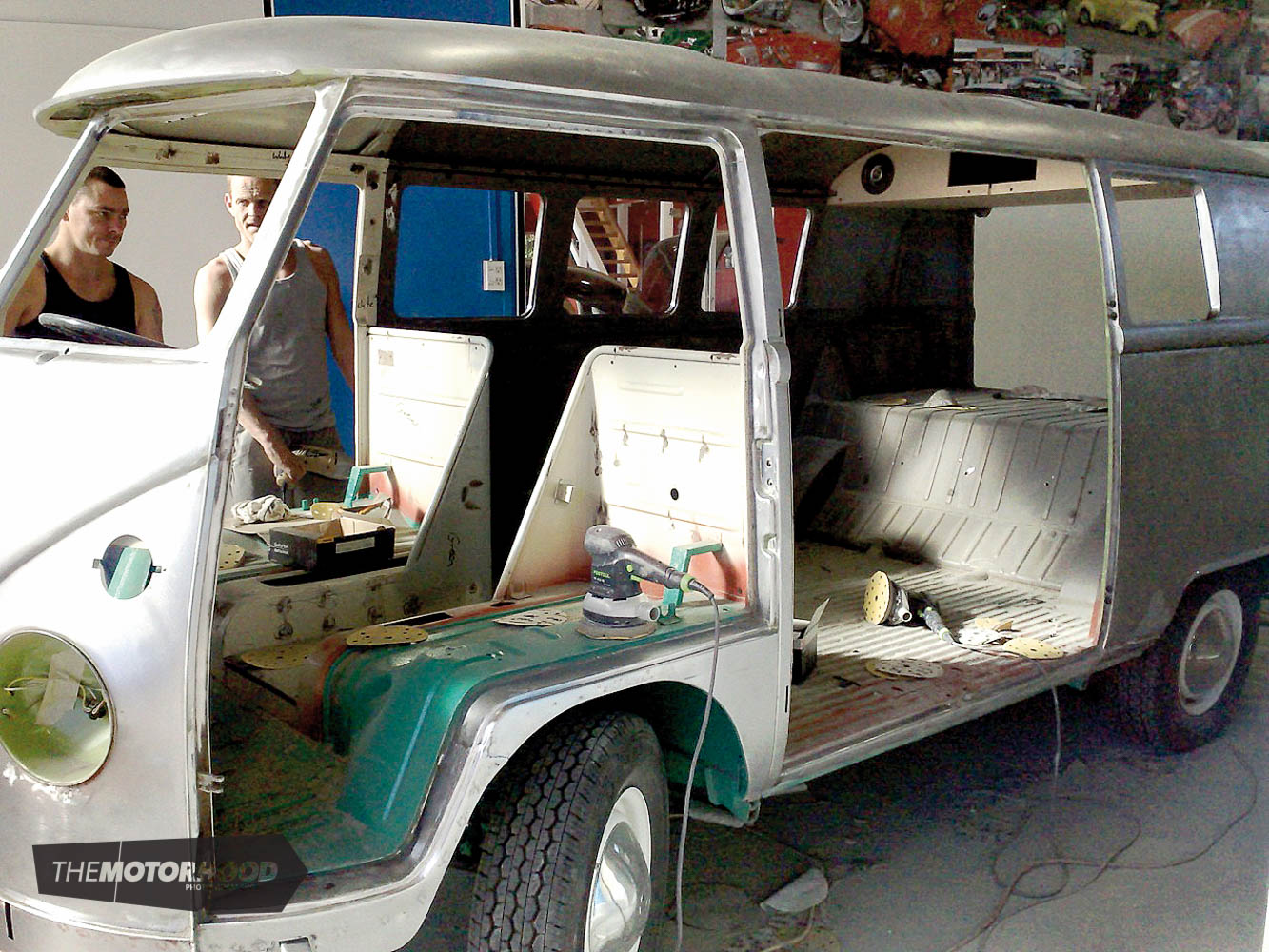
data-animation-override>
“Something old, something new, something borrowed, something blue. We have it all right here in the one package. Come and take a ride in a classic icon”

That was an apt introduction to Kombined Experience, a company owned by Phil and Joanne Haslemore that caters predominantly for weddings and corporate promotions. So why Kombi vans, I hear you ask? Basically, it’s because Phil and Joanne just love the split-screen ‘splittie’ Kombi. Phil, an airline pilot, has always thought of the split-screen Kombi as the DC3 of the road. Like the aircraft, the Kombi was the ‘troop carrier’ for possibly millions of people travelling many millions of kilometres around the planet, which is probably why so many people have a story to tell about the old Kombi, as their appeal spans generations.

Splittie
The very first generation of Volkswagen buses, often referred to as split-window buses or the ‘splittie’, were built between 1949 and 1967. Today, enthusiasts worldwide regard the splittie as the pinnacle of Type II production – the second automotive line introduced by Volkswagen – and it’s generally considered to be the forerunner of modern cargo and passenger vans. Splitties came in many guises; barn door, panel, kombi, standard, deluxe, ambulance, single and double cab, walk-through, double door, semaphore and safari are just a few of the variants manufactured during their 18-year production period.
As well as the split front windscreen, splitties are also recognisable by their sweeping v-line front and a large VW emblem. They boasted plenty of interior space, about 4.8 cubic metres, which made them ideal for tradespeople and carrying passengers.

The engine and axles were courtesy of the Beetle, but the splittie had a unitary construction supported by a ladder frame, consisting of two longitudinal parallel girders or beams upon which the suspension, engine and transmission are mounted instead of the central frame platform. The payload was roughly 750kg, and the torsional rigidity inherent in the design ensures that the handling, although not considered brilliant, is good, which explains their usefulness as transporters. The engine had a cubic capacity of just over 1100cc with an output of 18kW at 3300rpm.

Fifty years on VW buses — generally nicknamed vee dub, hippie mobile, hippie bus, hippie van, and kombie — are as popular as ever, and they are enjoying a renaissance thanks to their enthusiastic following. Presumably, this is because they offer copious space for equipment and friends along with a sense of freedom.
These models are now rare, prized collectors’ items all over the globe and regardless of whatever nickname it is given, the Kombi reigns supreme over the vans, and has set itself in history for good.

Kombined effort
Phil and Joanne’s first Kombi (painted in blue and white) caught Phil’s eye as it is a 1967 model, which is the year he was born. However, it was registered in 1969 when it arrived in the country and therefore is now registered for that year.
Although this is the last of the German-built Kombi split-screens, the Brazilians continued to build them into the ’70s. Phil and Joanne purchased this ‘splittie’ after returning from Hong Kong – where Phil flew for a locally based airline company – as they’d decided New Zealand was a better place for his family to live.
Practically, it just didn’t really make sense for Phil and Joanne to own a Kombi as an everyday vehicle; however, it made good sense to perhaps use it as a promotional vehicle for a business venture.

The 1967 Kombi 11 Window was bought in April 2009 and the decision was made to engage the services of Jason at Auto Colour Matrix to restore it to its former glory, as well as add a few mod cons. Phil believed Jason could bring the right amount of classic styling and bling together to create the exact vehicle he and Joanne were looking for.
Phil had never been involved in restoring cars before and having thought he could pop into town and get a few things for his Kombi he was left a little unprepared for the job at hand, to say the least.

It took many weeks to find exactly the list of parts he required, but getting them in the allocated time frame to fit in with Jason’s progress was a challenge. The list included the Safari front windscreens, pop out windows for the rear, full body trim, EMPI five-spoke wheels, new headlights and indicators, mirrors, window and door rubbers, all items necessary for a restoration of this calibre.

The previous owner had already begun restoration on the Kombi. The chassis, suspension, brakes and 1500cc single port engine had been taken care of leaving the body as a blank canvas on which Jason could apply his magic. Luckily, the body was in fairly good shape with little or no rust to speak of. Once it was stripped back and prepared for paint, Jason applied the stunning light metallic blue and white paint scheme.

Inside, Geoff at GM Interiors treated the Kombi to oodles of luxurious white leather upholstery and trim as well as fitting plush carpet throughout. The interior for Kelly, the first Kombi, had to be perfect. Phil and Joanne needed the club seating style so wedding guests could face each other and converse easily. The final design of the seats themselves surpassed their expectations. Geoff skilfully handcrafted them from blocks of foam. They look and feel great.
A 19-inch drop-down DVD screen and comprehensive Sony sound system were added to complete the overall package.

Another Kombination
Phil and Joanne came up with the idea of using a Kombi as a wedding conveyance as a way to share the experience of such an interesting and appealing vehicle. They may be slightly biased, but they reckon these ‘vans’ or work trucks as they were originally intended have more curves than Pamela Anderson, and furthermore, they look simply stunning in wedding photographs.
They were pleasantly surprised at how quickly the blue Kombi (soon nicknamed Kelly) became sought after and decided to proceed with a second Kombi – the Champagne Kombi (Bessy) – as an expansion on the idea that spawned the first one.

In order to present the Kombi as a wedding car, they again sought the expertise of Jason at Auto Colour Matrix to create a balance between style and versatility.
The second Kombi, a 1965 model, was in fairly original, unrestored condition and surprisingly sound given its age. By the time Bessy was in the shop, Phil knew exactly what to do, and shopping for Kombi bits was a breeze – he’s even contemplated a third Kombi. But they are hard to find, though meanwhile the boys at Auto Colour Matrix even suggest he joins two Kombis together. Don’t worry, if it happens you’ll be the first to read about it.

Jason and his team of highly skilled craftsmen were able to transform a weary old girl into a thing of beauty, according to Phil. The body was completely stripped and the Champagne colour complemented by the off white was applied. The running gear was left fairly much as it was, requiring only minor work, and the engine – a 1600cc twin port that Phil thinks was probably installed some time during the 1980s – was in good mechanical condition.
For Bessy, Phil and Joanne wanted a slightly more relaxed feel. It also needed to be turned into a camper if so desired. They required club seating for this Kombi as well but wanted to be able to mount a flat screen TV in the back.

Now, when the seat is removed and the 26-inch TV screen is in place, Phil reckons it’s like being in your own personal movie theatre. He say’s it’s a real laugh when they’re driving around and people can clearly see the kids in the back watching Shrek. Apparently, they had one car follow them for quite some time – Phil thinks they just wanted to see what happened to Donkey.

Kombined satisfaction
Phil admits these vehicles are real eye candy and together with his wife, Joanne, he has had enormous pleasure in being part of preserving a piece of history that many people can relate to. Kombis are indeed unique and are becoming hard to find in good order, and Phil feels fortunate that they were able to obtain two in such wonderful condition.
Phil now understands that restoring old cars can be a massive undertaking in both financial and emotional terms. Each project has its own hurdles that must be overcome in order to get to the final product. It’s not for the faint-hearted, but the experience he and his wife have gained restoring Kelly and Bessy to better than new is something that they wouldn’t have missed.

They feel they can add something a little different to a wedding occasion and look forward to many years working with these two cars, as well of course as looking forward to the restoration of another one.
The attention to detail that went into restoring these amazing vehicles is the same attention to detail they put into ensuring their clients enjoy them as much as they do.
Phil and Joanne are staggered at what has been created and can take only a little credit. There are people in the car industry in and around New Zealand who can work miracles. The team that worked on these cars is proof of that. Phil intends to maintain contact with all of them through the years as they maintain these stunning Kombis in the condition that is required to make someone’s day just a little bit different.
From the leather wrapped interior to the latest in audiovisual niceties, these classic beauties are certainly something to be seen in.
Phil reckons he’s never travelled in a vehicle that garners so much attention. Forget a Ferrari – if you want to get noticed splash out on a ‘splittie.’
This article originally appeared in New Zealand Classic Car Issue No. 239. You can pick up a print copy or a digital copy of the magazine below:
























